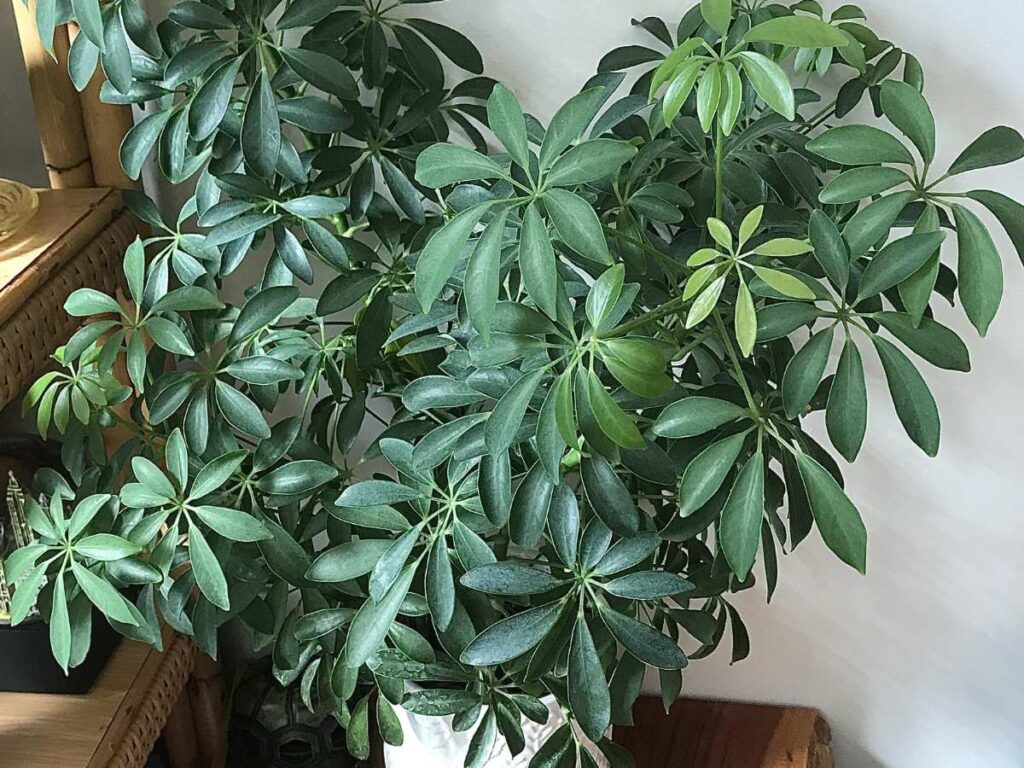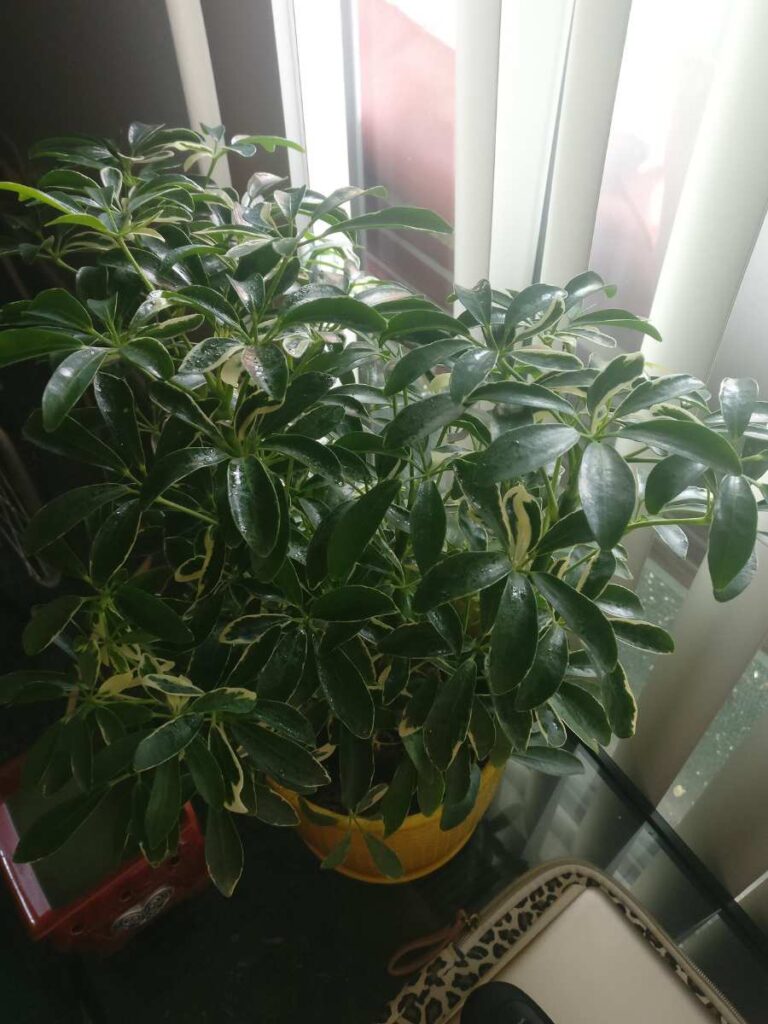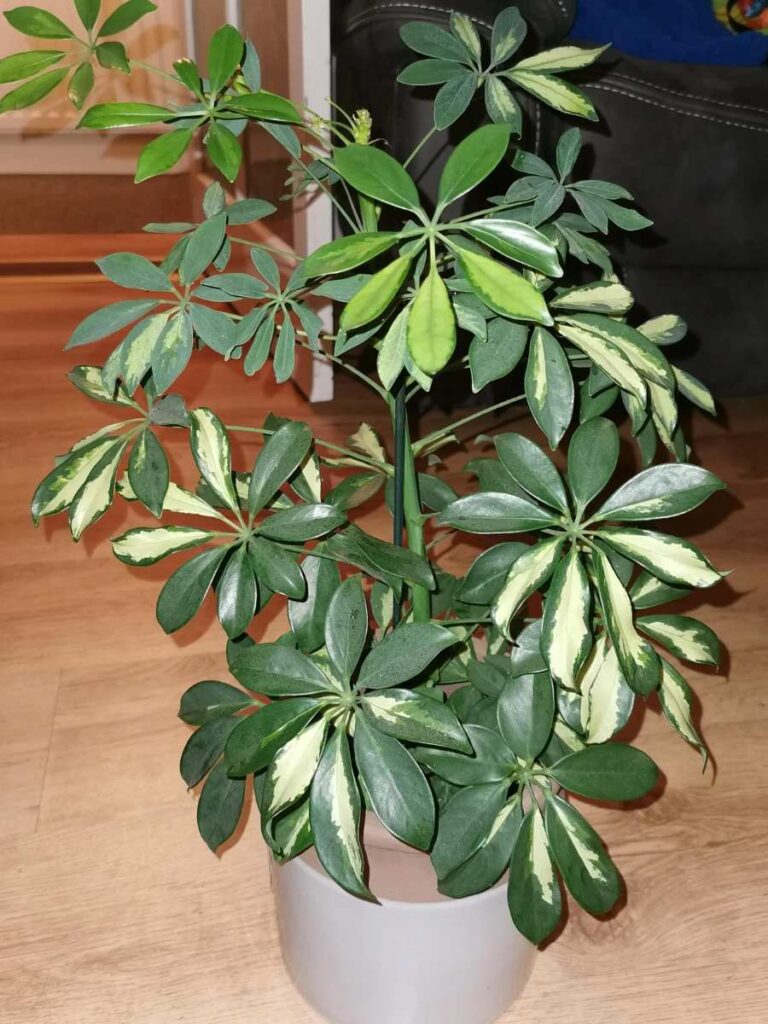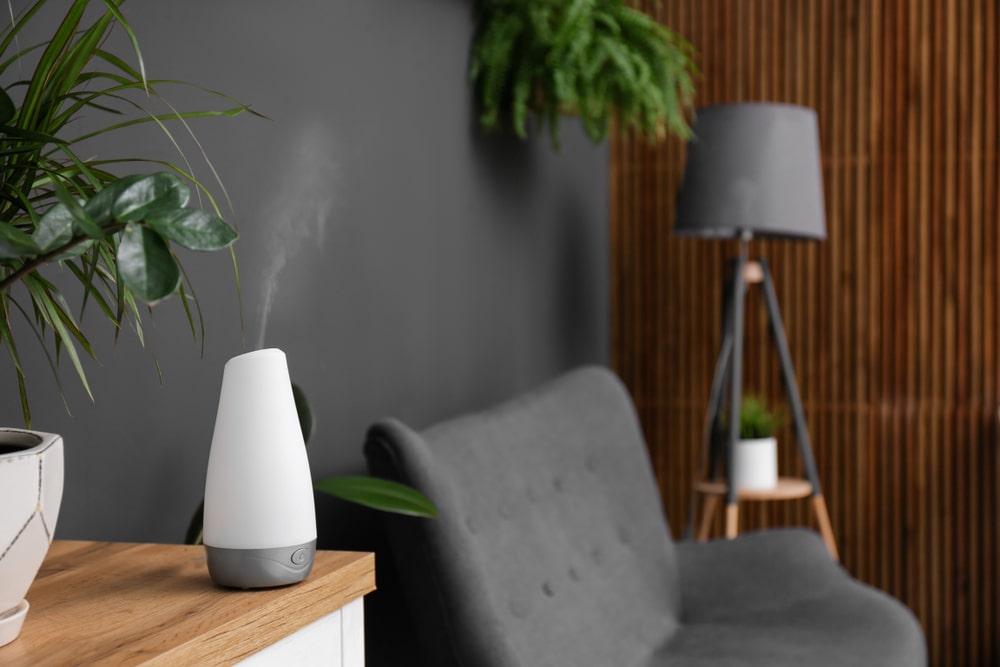The humble umbrella plant has been around for centuries, and its iconic shape has made it popular among gardeners worldwide.
But what happens when those same beloved plants face frigid temperatures?
Can they survive a harsh winter? Or do they become susceptible to frost damage and other weather-related problems?
We take a look at how these beautiful plants cope with freezing conditions so you can decide if yours should stay out all year round – or be packed away until spring arrives.
Here’s Can Umbrella Plants Survive Winter?
Umbrella plants, also known as Schefflera, can survive winter if given the right care. They should be planted in a sheltered spot and kept at temperatures between 60-75°F (15-24°C). In USDA zones 10 and 11, umbrella plants can be grown outdoors all year round.

Characteristics of The Umbrella Plant
The umbrella plant is truly remarkable in terms of hardiness and durability. Not only does it thrive when exposed to extreme temperatures, but also, due to its deep root system, it tends to be drought-resistant.
Its leaves are broad and large enough to provide protection from harsh sun rays and strong winds.
They’re evergreen so that they won’t drop off during cold weather.
All these factors combine to make the umbrella plant incredibly resilient. It’s no wonder it has been able to withstand various climates around the world for centuries!
Despite all these attributes, one should remember that even though the umbrella plant may seem indestructible at times, it still needs some TLC if you want it to survive through winter unscathed.
How Winter Can Affect the Umbrella Plant
The umbrella plant is a beautiful, resilient creature – but winter can be its toughest test. Like an unwelcome guest that stays too long, the cold season can bring out all sorts of challenges for this little plant.
Winter winds whip around us, chilling even the bravest of souls. Unfortunately, the same can be true for umbrella plants; they are exposed to harsh conditions that may cause wilting or cause their leaves to turn brown.
To help protect against these effects, gardeners should wrap the base of the plant in burlap or plastic sheeting to keep moisture levels high during extreme cold.
In addition, adding a layer of mulch will not only provide insulation but also help maintain soil temperature at a more moderate level.
What Temperature Is Too Cold for Umbrella Plants?
When winter arrives, it brings a chill in the air and a flurry of snow. But what happens to our umbrella plants when temperatures start to dip? Can they survive those cold nights, or are they doomed?
Ideal temperatures for Umbrella Plants are between 65-85°F (18-29°C). If it’s too low, then even hardy umbrella plants will suffer.
A good rule of thumb is that anything below 50 degrees Fahrenheit (10 degree Celsius) can be fatal for these plants.
Even if temperatures don’t drop quite this low, umbrella plants may struggle as exposure to cooler weather for extended periods weakens them and makes them more susceptible to disease and pests.
How Can You Prepare the Umbrella Plant for Winter?
Likewise, shepherds tending their flock, we must take measures to protect our plants from harm.
The first step when prepping for winter weather is assessing what kind of cold your umbrella plant can tolerate.
Temperatures below 50 degrees Fahrenheit will cause distress and may result in death – so ensuring they have enough insulation from the elements is paramount.
You’ll need to bring them inside or give them extra protection, such as adding mulch around their base or covering them with burlap during extreme temperatures.
Once you’ve determined the necessary precautions for temperature control, it is important to consider the soil quality too.
It needs to be well-draining yet also able to retain moisture for roots to stay healthy and hydrated throughout colder periods.
Adding compost or manure mixed into the existing soil helps keep adequate levels of nutrients available, which will assist with growth come springtime.

Winter Pruning and Maintenance
As winter approaches, it is essential to ensure that umbrella plants are well-prepared for the cold weather.
Pruning and maintenance during this time of year can make a world of difference in their survival rate.
Ensure our beloved plants have what they need to thrive throughout the season.
To begin with, pruning any dead or diseased foliage from your plant before temperatures drop ensures that no fungal spores become trapped within them and cause further damage throughout winter.
As a bonus, removing dead leaves prevents other potential pests from the residence in these areas – much like clearing out your attic before you invite guests into your home!
Furthermore, if your umbrella plant is looking sparse after its initial trimming, prune off some of the lower branches to encourage new growth come springtime.
Once you’ve tidied up the exterior of your plant, focus on mulching around its base. This helps insulate the roots and seal in moisture leading up until the warmer months arrive again.
Be sure to select a material that won’t draw away vital nutrients or promote rot. A layer of 2–4 inches should suffice for most species.
However, it’s best to consult with a local gardening expert beforehand if you need clarification on which type best suits your particular needs.
How to Care for The Umbrella Plant During Winter
Caring for your umbrella plant during winter requires careful consideration and preparation. From indoors to outdoors, there are many key steps you can take to protect this unique houseplant from the cold weather.
Indoor Winter Care for Umbrella Plants
1. Temperature Control
For umbrella plants to survive winter indoors, temperature stability is crucial. Ideally, the range should be between 60-75°F, avoiding sudden changes.
Keep the plant away from doors or windows that may expose it to cold air currents. Using a thermometer to monitor the room temperature is a good idea.
If the temperature drops below 60°F, the plant may become stressed, which could impact its winter survival.
2. Humidity Maintenance
Umbrella plants prefer higher levels of humidity, around 75% or above.
To increase humidity, mist the plant and place a humidifier nearby or a tray of water close to the plant.
Avoid placing the plant near sources of dry air, such as heating vents or fans, which can cause stress.
3. Lighting Requirements
Umbrella plants prefer bright, indirect light, so providing enough light during winter is crucial.
They prefer temperatures of 60°F to 75°F (15°C to 24°C).
If the plant is near a window, move it away from direct sunlight, which can become too intense in winter.
In the absence of natural light, grow lights or artificial lighting can provide the required light.
4. Watering and Soil Maintenance
Consistent moisture is necessary for umbrella plants, but overwatering can lead to root rot.
Water the plant when the soil is dry and allow thorough draining.
Check soil moisture levels, as growing conditions can affect water requirements.
If the soil is too wet, take steps to improve drainage, such as repotting into a pot with better drainage holes.
5. Potting and Repotting Considerations
Umbrella plants prefer being slightly root-bound, but repotting into a larger pot is essential if the roots have outgrown the pot.
Choose a pot that accommodates the roots but is manageable as it may hold too much water leading to root rot.
Use a well-draining potting mix when repotting, and be gentle with the roots.
6. Considerations for Heating Systems and Air Flow
Heating systems can dry the air and lower humidity levels, causing stress to umbrella plants.
Keep the plant away from the source of heat and monitor humidity levels in the room.
Adequate airflow is also important, as stagnant air can cause mold and disease.
Provide adequate ventilation and avoid placing the plant in areas with poor airflow.
7. Monitoring Plant Health and Appearance
Regular monitoring of the plant’s health and appearance is crucial to the early identification of stress or disease issues.
Look for yellowing or wilting leaves, indicating a lack of moisture or light.
Check for pests like spider mites or mealybugs, which can cause damage.
Cleaning the leaves regularly can improve the plant’s overall health and appearance.
8. Importance of Fertilization and Nutrition
Regular fertilization is vital for the health and growth of umbrella plants.
Use a balanced fertilizer once a month and follow the manufacturer’s instructions.
Provide the plant with the right nutrients using a well-draining potting mix containing plenty of organic matter.
Adding compost or other organic matter to the soil can provide additional nutrition.
9. Role of Grow Lights and Artificial Lighting
In case of low natural light, grow lights or artificial lighting can provide the required light.
Grow lights can be beneficial during winter months when natural light is low.
However, be careful not to over-light the plant, as too much light can cause stress and yellowing.
Choose to grow lights specifically designed for plants and follow the manufacturer’s instructions.
10. Impact of Temperature Fluctuations and Light Changes
Sudden changes in temperature or light can cause stress for umbrella plants, so it’s important to change gradually.
Be aware of changes in light levels during winter, as the angle and intensity of light can vary as the sun moves across the sky.
Moving the plant to different locations in the room can ensure it receives the right amount of light throughout the day.
Outdoor Winter Care for Umbrella Plants
1. Understanding Hardiness Zones
Before embarking on the outdoor winter care journey for your beloved umbrella plant, it’s imperative to comprehend the significance of hardiness zones.
These zones are a way of classifying plants based on their resilience to survive in diverse climatic conditions.
By being cognizant of your hardiness zone, you can determine whether your umbrella plant has the fortitude to withstand winter in the open air.
2. Protection from Wind and Snow
The wrath of wind and snow can take a toll on umbrella plants. Hence, it’s crucial to provide robust protection.
You can employ burlap or other covering material to shield the plant from the wind or construct a physical barrier, such as a fence or wall, to block the wind.
Furthermore, make sure to clear any snow accumulation on the plant, as excessive snow can cause branches to break or damage the plant.
3. Insulating the Plant and Soil
To ensure the survival of your umbrella plant during winter, it’s crucial to provide insulation to the roots to guard against the cold.
You can utilize mulch or any organic material to insulate the soil, which will help maintain warmth and moisture levels.
Additionally, protective coverings like frost cloth or burlap can cover the plant and offer extra insulation.
4. Watering Considerations
Watering considerations are critical for the outdoor winter care of umbrella plants.
Be sure to water the plant regularly but avoid overwatering as it can lead to root rot.
Check the soil frequently to ensure it’s not too dry, and adjust your watering schedule as needed.
It’s also imperative to avoid watering the plant when the temperature is below freezing, as it can harm the roots.
5. Mulching for Winter Protection
Mulching is a powerful tool for providing winter defense for your umbrella plant.
Mulch acts as a barrier, insulating the soil and safeguarding the roots from the cold. Furthermore, mulch can conserve moisture and enhance soil fertility.
Use a layer of mulch that’s at least 2-3 inches deep, and make sure not to place the mulch directly against the stem of the plant as it can cause damage.
6. Winter Protection Structures and Coverings
Several structures and coverings can offer winter protection for umbrella plants, including greenhouses, cold frames, and grow tents.
Greenhouses are fully enclosed structures that can provide a warm and sheltered environment for your plant.
Cold frames are similar to greenhouses but are smaller and can be placed directly on the ground.
Grow tents are portable indoor structures that can create a controlled environment for your plant.
Each of these structures has its pros and cons, so choosing the one that best fits your needs and budget is essential.

Common Winter Pests and Diseases
Pests such as mealybugs, aphids, and spider mites can attack umbrella plants in winter.
They may seem harmless initially, but these tiny critters can spread disease quickly if not dealt with promptly.
And then there’s fungus – this nasty family of pathogens thrives on damp conditions found during the colder months, causing brown spots on leaves or even wilting them completely!
So how do you protect your beloved umbrella plant from harm?
Regularly checking your backyard garden is always a good idea; removing any dead foliage could help stop an infestation before it starts.
Also, make sure to keep up with watering schedules – overwatering encourages fungus growth, so strike a balance between wetness and dryness.
Finally, don’t forget to use insecticides when needed – they mightn’t prevent all damage. However, they’re still essential for keeping plant health healthy throughout winter.
Tips for Keeping Your Umbrella Plant Healthy During Winter
Firstly, it’s important to remember that these plants need at least six hours of sun each day to stay vibrant and thriving.
Consider placing them near windows or other areas where they will get plenty of light, even when days are short and grey.
Keeping your umbrellas in pots with good drainage is key; if water pools around the roots, it can cause damage over time.
Another way to protect your plants from frigid weather is using frost cloths or covers on colder nights. This extra layer helps trap heat and prevents freezing temperatures from harming delicate foliage.
It’s also wise to mulch around the planter’s base to insulate against extreme conditions–make sure not to pile too much onto the surface, as that can suffocate the roots!
These simple tips should help ensure your umbrella plants remain happy and healthy all year long–even during those tough winter months!
Conclusion
The winter months can be difficult for umbrella plants as they are not naturally adapted to surviving in freezing temperatures.
However, with careful preparation and thoughtful care during the cold season, it is possible to keep your umbrella plant healthy and thriving.
Providing adequate shelter and protection from extreme weather conditions and regular dead or unhealthy growth pruning.
And Vigilant monitoring of pests and diseases, you can ensure that your umbrella plant will survive through the winter without any major problems.







